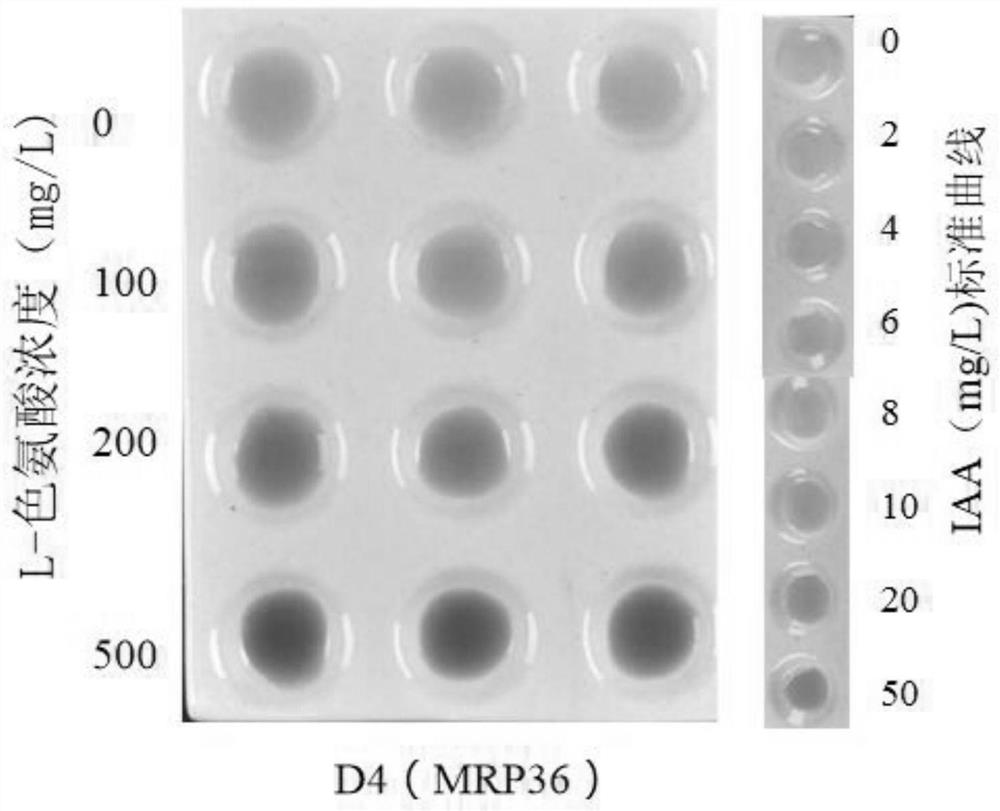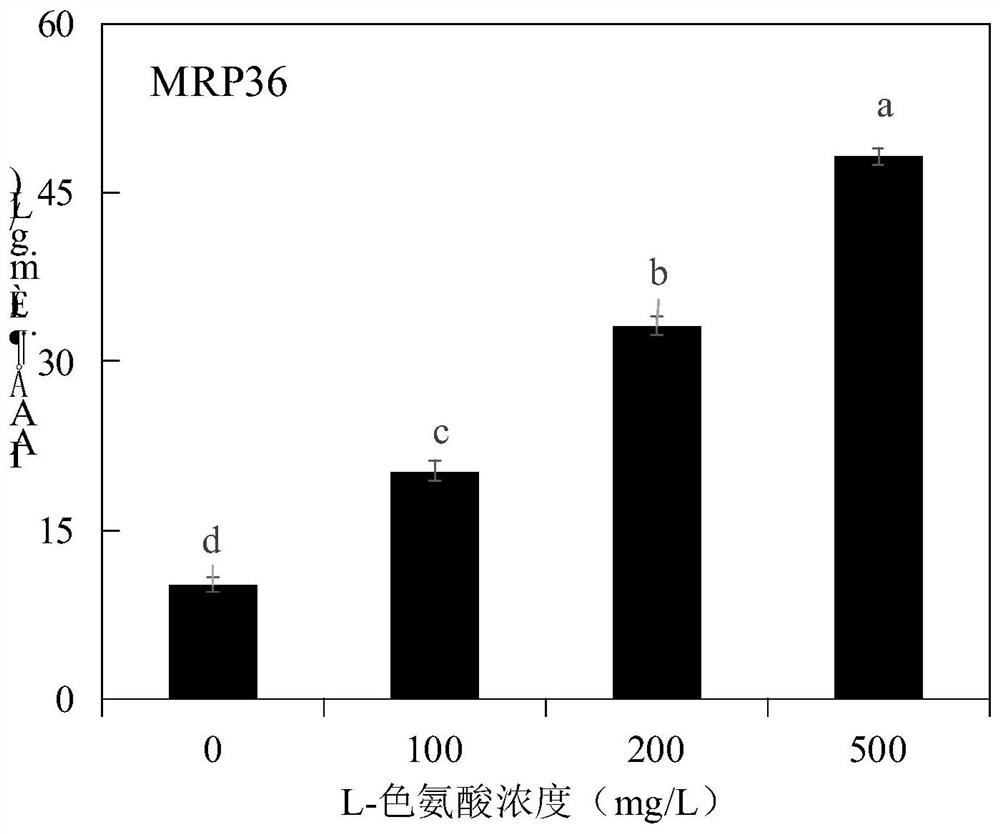Cadmium-resistant growth-promoting Providencia sp. strain and application thereof
A technology of Providencia rettgeri and strains, applied in the field of microorganisms, can solve the problems of cadmium intolerance, achieve the effects of promoting phosphorus content, improving cadmium resistance, and overcoming growth inhibition
- Summary
- Abstract
- Description
- Claims
- Application Information
AI Technical Summary
Problems solved by technology
Method used
Image
Examples
Embodiment 1
[0046] Embodiment 1: Separation and purification of bacterial strains
[0047] 1. Isolation and purification of strains
[0048] In Beiyue Village, Qujiang District, Shaoguan City, strains were isolated from the rhizosphere of maize (Zhengtian 68) grown on cadmium-contaminated soil. Cut 5g of corn roots respectively, brush off the surface soil with a small brush, rinse with sterile water several times until there is no attached soil, put it in a 250mL numbered triangular bottle filled with 100mL of sterilized water, 180r / min, 37℃ Shaker, shake 30min. Add 10-20 glass beads to the Erlenmeyer flask to help break up the soil, so that the bacteria can be released from the soil. After the shaking is over, let the soil suspension stand for 10 minutes to obtain a soil suspension. Take the supernatant and carry out 10 times Serial gradient concentration dilution, diluted to 10 -1 、10 -2 、10 -3 、10 -4 、10 -5 , 10 -6 , then pipette 0.1mL of the diluent and spread it on the LB pla...
Embodiment 2
[0050] Embodiment 2: strain screening
[0051] 2.1 Primary screening of phosphate-dissolving bacteria
[0052] The screened bacterial strains were inoculated on PKO solid medium, and each plate was spotted three times, cultured in a 28°C incubator, and the outer diameter (D) and colony diameter (d) of the strain were measured on the 7th day and photographed. Those with a phosphorus-dissolving circle can dissolve phosphorus. Then compare the ratio of (D / d) to judge the phosphorus-dissolving ability of the strain.
[0053] Take 1mL of the bacterial solution of the strain with a phosphorus-dissolving circle, inoculate it into 20mL LB liquid medium (50mL centrifuge tube), and measure the OD after 24 hours of cultivation 600 1.0, take 1mL of bacterial suspension and inoculate in 20mL PKO liquid medium (50mL centrifuge tube), repeat three times for each strain, CK control group is inoculated with the same amount of sterile water, placed at 28°C, 180r / min in a shaker. Measure th...
Embodiment 3
[0069] Example 3 strain identification
[0070] After comprehensive consideration in many aspects, the screened strain MRP36 was identified.
[0071] 3.1 Morphological identification of strains
[0072] The strain MRP36 was inoculated on LB solid medium for cultivation, and observation records were made. After culturing for 5-7 days under the optimum growth conditions (pH 7.0, temperature 37°C), the isolated and purified strain MRP36 was observed for single colony status, mainly including colony size, color, colony surface status and colony edge status, etc. . On the other hand, for the bacterial strain MRP36 in the logarithmic growth phase, the morphology of the bacterial cells was observed with an optical microscope after the smear was stained.
[0073] On the LB plate medium, approximately round, smooth, protruding, milky white colonies are formed, Gram staining is red, and Gram-negative bacteria.
[0074] 3.2 Molecular identification
[0075] After various screening a...
PUM
 Login to View More
Login to View More Abstract
Description
Claims
Application Information
 Login to View More
Login to View More - R&D
- Intellectual Property
- Life Sciences
- Materials
- Tech Scout
- Unparalleled Data Quality
- Higher Quality Content
- 60% Fewer Hallucinations
Browse by: Latest US Patents, China's latest patents, Technical Efficacy Thesaurus, Application Domain, Technology Topic, Popular Technical Reports.
© 2025 PatSnap. All rights reserved.Legal|Privacy policy|Modern Slavery Act Transparency Statement|Sitemap|About US| Contact US: help@patsnap.com



